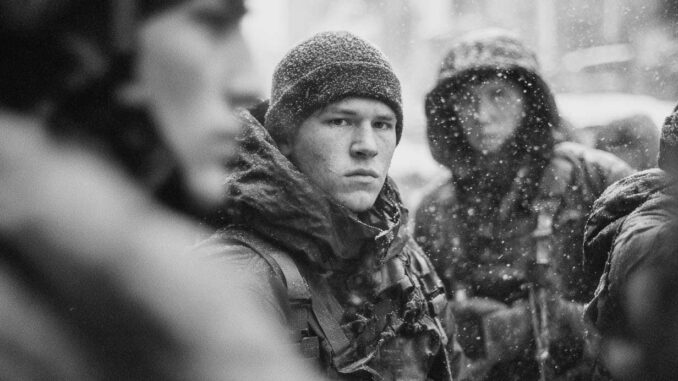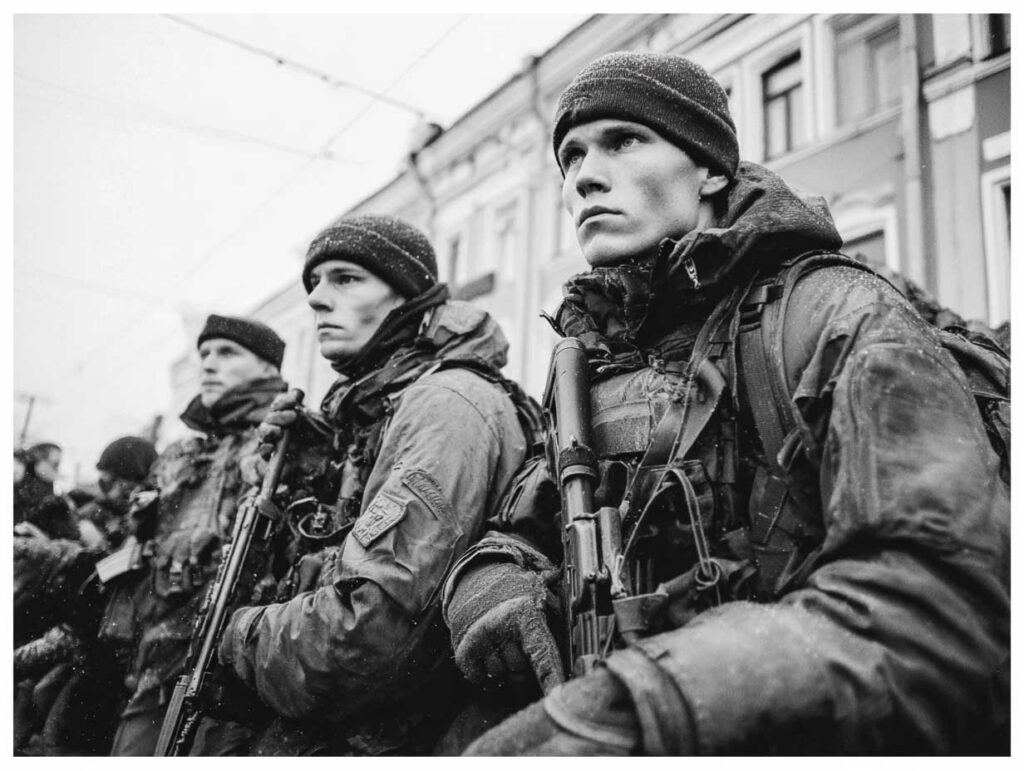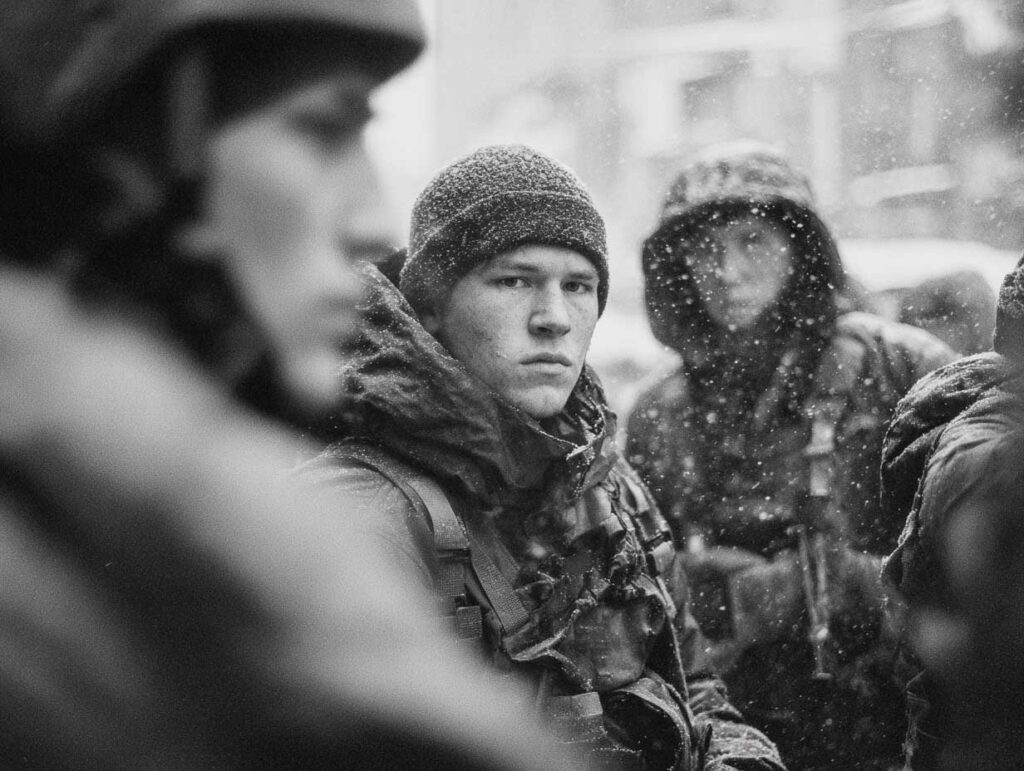
Chaos is spreading along the Russian-Ukrainian border, where armed ex-soldiers are living off looting while Moscow ignores the growing crisis.
Summary
After more than three years of war in Ukraine, the Russian side of the border has become a hotbed of violence and armed crime. Many Russian soldiers, often deserters, are forming armed gangs, living off looting and escaping the control of local authorities. The Russian police forces, overwhelmed or complacent, allow these groups to operate, prompting civilians to leave the area.
The morale of Russian troops, already low, fuels these desertions, while Moscow prefers to delegate the management of this crisis to local authorities. At the same time, the Kremlin is relying on foreign mercenaries, particularly from Cuba and Central Asia, to maintain military pressure in Ukraine. This situation reflects the wear and tear on the Russian army, internal economic tensions, and Moscow’s growing dependence on external support.
Security destabilization along the border
The prolonged war has transformed certain Russian border areas into zones of chronic insecurity. Groups of former soldiers, often armed and trained, engage in local raids: theft, extortion, road control, and smuggling.
Regional police forces, which are under-equipped and sometimes infiltrated by corruption, are struggling to restore order. In some localities, they have reportedly made tacit agreements with these gangs to avoid direct confrontation.
Fearing for their safety, residents of border villages and small towns are regularly urged by local authorities to evacuate the area. This internal migration further weakens the already precarious economy of these regions.
The situation illustrates a erosion of state control, with armed non-state actors thriving in the security vacuum. Moscow tolerates this state of affairs as long as these gangs do not seek to penetrate deeper into Russian territory.

The link between mass desertions and collapsing morale
Desertion has become a defining phenomenon. Faced with a protracted conflict and high human losses, a growing number of soldiers are leaving the ranks. Many take their weapons with them and join the gangs operating in the border areas.
Russian officers, themselves affected by the duration and intensity of the conflict, are reluctant to crack down on desertions for fear of further incidents or mutinies. This erosion of military discipline exacerbates the security vacuum and highlights the strain on an army mobilized beyond its organizational capabilities.
This phenomenon weakens Russia’s offensive capability, as many units can no longer be engaged in complex operations. Only formations that are still well-trained, often elite or reinforced by mercenaries, participate in assaults.
The rise of foreign mercenaries and external dependence
To compensate for the decline in manpower and support its offensives, Moscow is increasingly relying on foreign mercenaries. After using North Korean contingents, Russia is now recruiting in Central Asia and Cuba.
The use of Cubans can be explained by the island’s economic fragility. In exchange for sending volunteers attracted by high salaries and substantial death benefits, Moscow is increasing its energy aid to Havana. This support has enabled certain Cuban sectors, particularly tourism, to remain afloat despite massive power cuts.
This system reveals a compensation strategy: Russia is outsourcing part of its military effort while creating networks of economic dependence with vulnerable partners. However, this approach raises questions about the loyalty and combat effectiveness of these foreign recruits.
The economic impact and pressure on Russian energy
The ongoing war and border unrest are taking place against a backdrop of economic fragility for Moscow. Western sanctions have reduced Russia’s financial leeway and complicated its access to international markets.
Despite these sanctions, Europe continues to purchase more than €200 billion worth of Russian oil and gas each year, indirectly fueling the war effort. The United States is pressuring its allies to reduce this dependence and accelerate the search for alternative energy sources.
Financing the war and the need to buy the loyalty of mercenaries are weighing on the Russian budget. This is exacerbating tensions between the federal center and the regions, which have to deal with crime without additional resources. This combination is undermining the internal cohesion of the Russian state.

Strategic implications and Moscow’s response
The relative inaction of the central government in the face of border violence reflects a priority given to the Ukrainian front rather than to internal stability. Moscow plans to intervene only if these gangs cross certain geographical boundaries, leaving it to local administrations to contain the situation.
This approach carries risks in the medium term. The presence of seasoned but undisciplined armed men, the growing porosity of smuggling networks, and the increasing mistrust of local populations may ultimately weaken the state’s ability to restore its authority.
Current developments reflect a weakening of national cohesion and highlight the challenge of managing demobilized veterans or deserters in societies facing prolonged wars. For Moscow, ignoring the problem risks turning a local crisis into a factor of structural instability.
Long-term consequences and regional prospects
If the phenomenon persists, the Russian-Ukrainian border could become a lasting gray zone, combining organized crime, military remnants, and geopolitical tensions. Such an environment encourages arms smuggling, human trafficking, and a weakening of trust between border populations and institutions.
On a broader scale, this situation highlights the impact of war fatigue on the cohesion of armies and internal security. For Europe, it represents an additional factor of instability in a region already marked by strategic uncertainty.
Moscow’s inability to respond effectively also shows the limits of its territorial control. Ultimately, these uncontrolled areas could weigh on the conduct of the war and on the political stability of Russia itself.
War Wings Daily is an independant magazine.